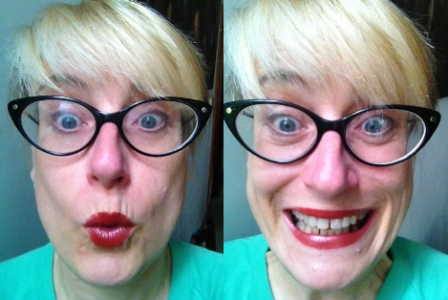Vowels and consonants
0 Replies
I'll be working with my first Uyghur student this year, so have been doing a bit of background research, to better understand where she's coming from, and make sure I don't commit any major cultural fox paws.
The Uyghur are a Turkic people most of whom live in Western China. They're mostly Sunni Muslims, and their language is written in a script a bit like Arabic.
Westerners tend to pronounce "Uyghur" as "Wee-gur" but thanks to the internet and having learnt the International Phonetic Alphabet at uni, I've figured out it's more correct to say something like "ooh-ee-goo-uh".
I've been practicing this, lying on the couch with my laptop (as you do), and it's made me think about the considerable overlap between the sounds and letters "u" and "w", between "ee" and "y", and overlap between vowels and consonants more generally.
"ooh" is almost "w"
Westerners muck up the pronunciation of Uyghur because the vowel sound "ooh" (as in "too") and the consonant sound "w" (as in "wet") are just about identical. In fact, in linguistics, "w" is classified as a semivowel.
Try saying "too wet" slowly and concentrate on the transition between these two sounds. Not much, eh? Now try "two eggs", officially without a "w" sound. You still get quite a bit of lip rounding and w-ish-ness going on between the words.
We're also constantly writing the letter u to represent the sound "w".
We routinely write qu and gu (not kw/cw or gw) at word and syllable beginnings, as in "quit", "queen" and "squint", "guava", "language" and "penguin".
The sound "w" spelt with a letter u is also in "suede", "suite", "cuisine", "ennui", "chihuahua" and many other words borrowed from other languages, like "Kuala Lumpur", "Ecuador", "Sichuan" and "Venezuela" (more examples are here).
One of the "ooh" sound's most common spellings is ew as in "chew" and "shrew", half written with a letter w. When we extend words with this final sound using suffixes starting with vowels (like –ing, –ist and –er), we also tend to add a little "w" sound.
Consonants that creep in between syllables
Think about how much you round your lips when you say "chew" compared with when you say "chewing", or "shrew" compared with "shrewish". In the longer word, a little "w" consonant sneaks in and acts like punctuation between the vowels (which is kinda what consonants are).
The more you narrow your vocal tract – in this case by rounding your lips more – the more a sound changes from a vowel into a consonant. The mouth is a mushy place, and every mouth is a bit different, so there's no official border between the sounds "ooh" and "w".
A similar thing happens with the spelling ow as in "vow" or "wow", and as in "low" and "glow", when you turn these into longer words like "vowel", "wowing", "lowest" and "glowing". You get extra lip rounding in between the syllables, and hear a little "w".
You'd imagine that the same thing would happen when you extend words spelt with aw, like turning "saw" and "draw" into "sawing" and "drawing". But at least in my Australian accent, a little "r" sound is added instead. Which makes sense when you realise seven of this vowel's main spellings include a letter r, as in "for", "bore", "four", "war", "door", "soar" and "dinosaur".
"ee" is almost "y"
Another consonant that's really a semivowel is the sound "y" as in "yes". Say it for a long time, and it's virtually indistinguishable from the sound "ee".
The vowel "ee" is often spelt with a letter y, as in "baby", "funny" and "silly" (and a lot more words here).
The vowel "ee" is also often spelt with a letter i, as in ski, kiwi and taxi (and more here).
So is the consonant "y", as in "brilliant", "onion" and "stallion" (and more).
And just to drive us all crazy, both sounds are occasionally spelt with a letter j, as in "hallelujah" and "fjord".
"l" and "r" are like vowels too
The consonant sounds "l" and "r" are also fairly open and vowelish, and the letters l and r are used in many vowel spellings – calm, talk, salmon, yolk, could, fur, for, more, four, roar, poor, bird, pier, term, their, beer, fear, car, care, hair…
Anyway, the moral of this story is: the difference between vowels and consonants is complicated. I recommend you just laugh at anyone who tells you there are a mere five vowel sounds and 21 consonant sounds, each with their own letter (except if they're in charge of teaching your child literacy).



Leave a Reply